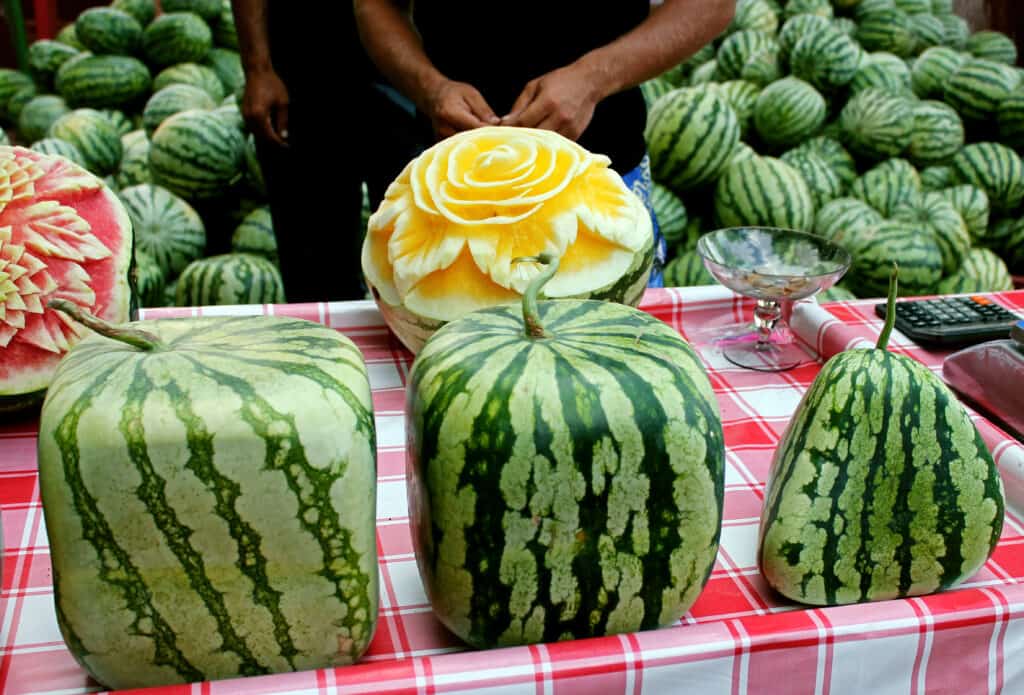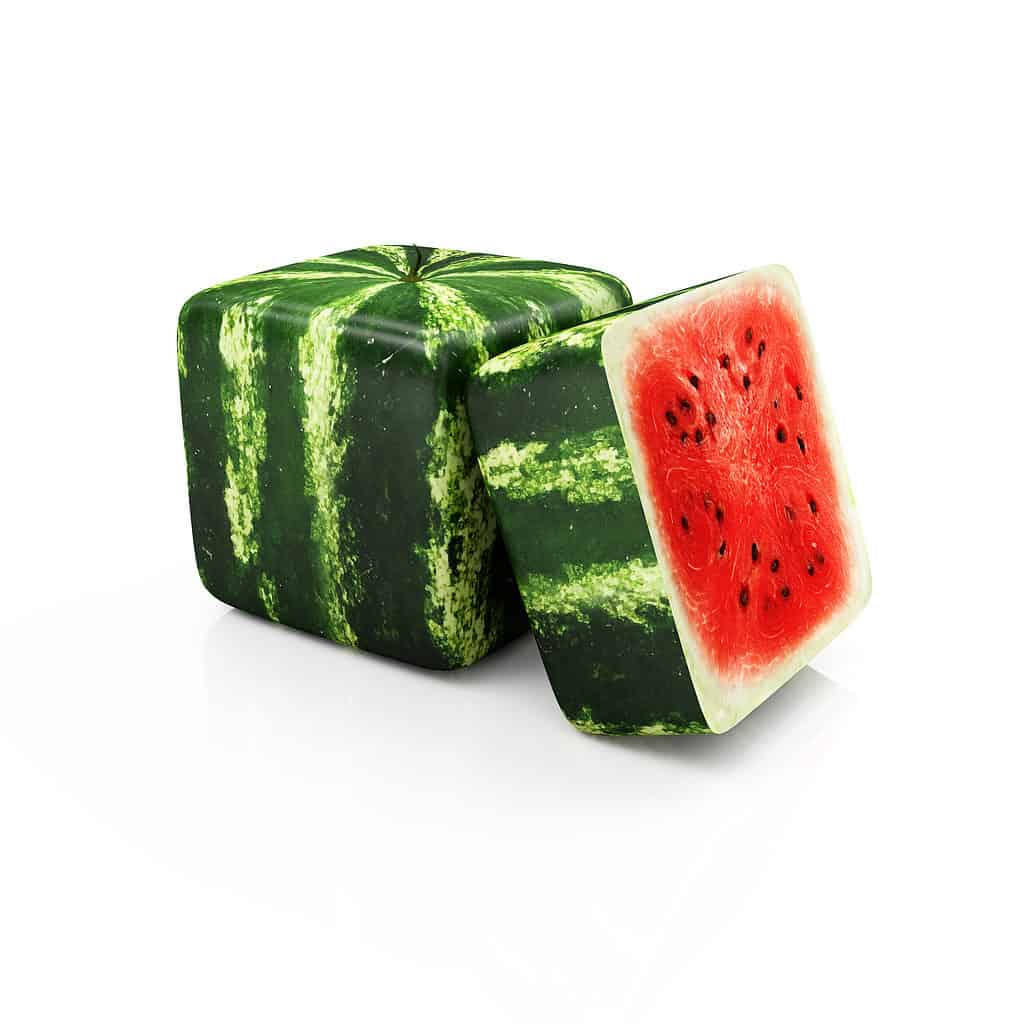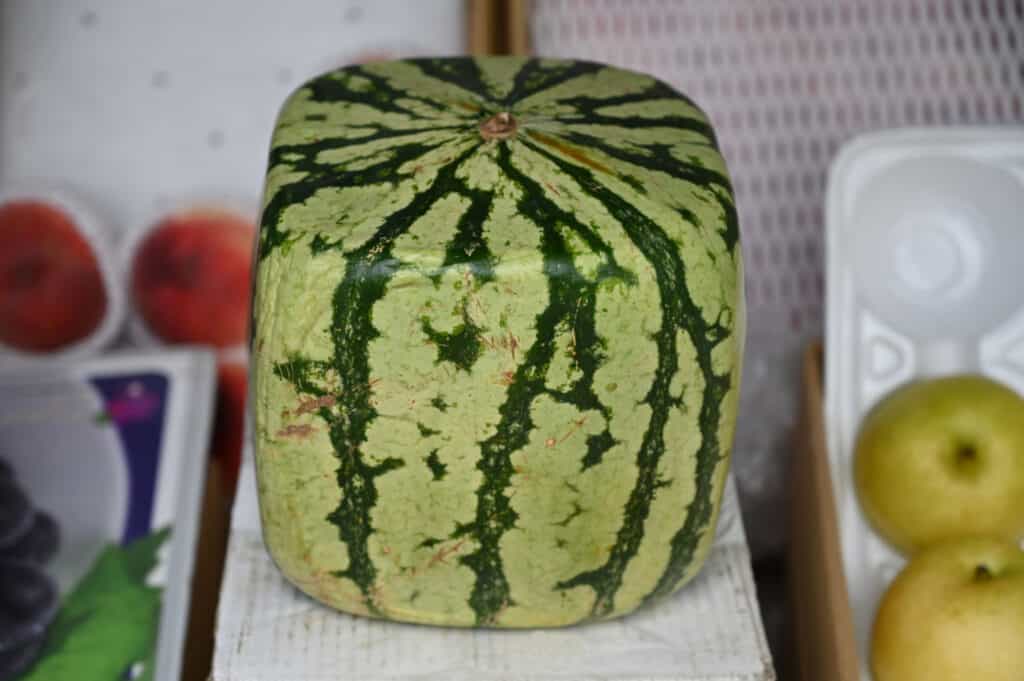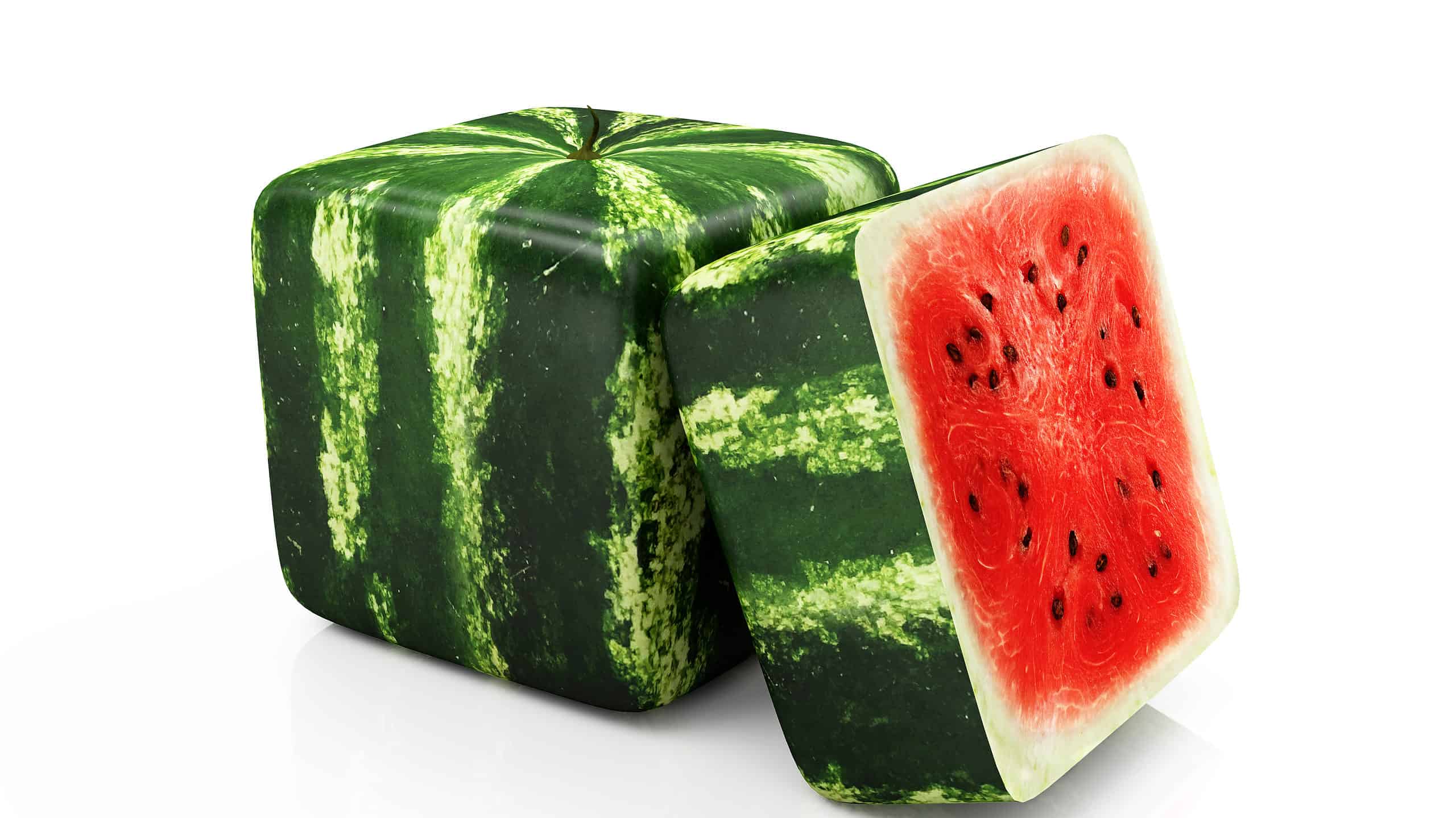Did you know that there is a very specific location in Japan that grows specialty square watermelons? Don’t get excited too soon, given the fact that square watermelons are only possible through careful cultivation and aren’t a type of watermelon that you can grow readily in your own backyard.
However, these melons are a luxury novelty item in Japan, frequently given as a gift at high prices. But how did these melons come to be, what do they taste like, and how much do these melons cost on average?
In this article, we will endeavor to answer all of these questions and more.
Let’s get started and talk all about Japan’s square watermelons now!
Japan’s Square Watermelons: A Brief History

The city of Zentsuji in Japan is an ideal location for watermelons, as they grow and thrive in the hot, relatively dry summers.
©Natalia Tiabina/Shutterstock.com
The very first square watermelon was successfully grown and developed in 1975. However, this wasn’t something that happened by accident or easily. Created in the city of Zentsuji in the Kagawa Prefecture of Japan, square watermelons are carefully cultivated and grown from plenty of research, testing, and practice. But why exactly were they grown in the first place?
The city of Zentsuji in Japan is an ideal location for watermelons. They grow and thrive in the hot, relatively dry summers. Given the prevalence of watermelon growing in this region and others, Zentsuji decided to make a watermelon that was all their own. It is best to think of the square watermelon as a trademark of the city, something that they could become well-known for in a time of commercial upheaval and change.
Another reason why these melons were grown in the first place is because of their more convenient shape. Having a square watermelon, grown specifically to certain standards, makes it easy for these fruits to fit within a standard refrigerator. In addition, having a flat surface also means that these melons are easier to cut, store, ship, and prepare compared to rounded watermelons.
The process of growing square watermelons is simpler than you may think. Expert growers of these unique fruits build transparent boxes for them. These boxes are slightly smaller than the fully matured size of an average watermelon. As the melon grows, it is forced into a square shape, or whatever shape the box happens to be in. There are triangular and heart-shaped watermelons also commonly for sale in Japan.
Are Square Watermelons Tasty?
Perhaps the most astonishing revelation is that square watermelons do not offer a delightful taste. These fruits must be harvested before reaching ripeness, resulting in a yellow and unappetizing interior. Nevertheless, this method extends their shelf life, keeping them in perfect condition for a longer period.
While some think the watermelons are bland and have no flavor, others feel that the taste of these square watermelons is no different than the regular fruit. Generally, modern square watermelons are often more for aesthetics rather than food.
They are typically harvested for decorative gifts or novelties.
How Much Do Square Watermelons Cost?

The first square watermelon was successfully grown in 1975.
©iStock.com/rasslava
Depending on many factors, the average square watermelon in Japan cost anywhere from $100 to over $500. If you want a square watermelon shipped to you in the United States from Japan, this is a possibility. However, with packaging, fees, and much more, some consumers report that they pay well over $800 for a single watermelon!
Again, aesthetics is everything, especially when you consider square watermelons. These fruits are purchased as presents and gifts, status symbols, and eye-catching trinkets. While you may think that the cost of one of these melons has everything to do with the way it tastes, there’s some bad news on the horizon for you. That’s right: all modern-day square watermelons are inedible.
Can I Eat a Square Watermelon from Japan?
While you may have once been able to eat a square watermelon from Zentsuji in Japan, this is no longer the case. In order to grow them to their specific shape and size, a specific cultivar is used with fairly inedible flesh and a bland taste. In addition to this, square watermelons are harvested long before they are ripe. This means that the fruit you end up purchasing isn’t ready to be eaten in the first place.
Even if you let your melon ripen in your own home, it is unlikely to taste like much of anything. However, this doesn’t seem to matter to people who purchase them. They are prized for their aesthetic appearance and status symbol more than anything else.
Why Are Square Watermelons So Expensive?

A scarred square watermelon typically doesn’t make it to market.
©Frank Middendorf/Shutterstock.com
One of the first things to understand about most of Japan’s specialty fruit industry is the fact that aesthetics is everything. While square watermelons were once grown to be eaten, the ones that you can purchase nowadays are basically inedible. They are plucked from the vine long before they are fully ripened and formed. This way, they can last longer in your own home as something to put on display rather than something to consume.
Not only are square watermelons prized for their appearance, but the ones grown specifically in Zentsuji are grown to such a standard that no one else can match. These watermelons are monitored daily, multiple times, and they are attended to like living animals or children. Any scratches or blemishes on the surface of these watermelons mean a loss in profit and fruit. Only the most beautiful and fully formed square watermelons make it to market.
Plus, this doesn’t take into consideration all of the things that can happen during a standard growing season. Just like any agricultural region, watermelons are susceptible to weather conditions and things beyond a farmer’s control. This includes temperature and storms. Depending on the growing season, some melons in Japan can cost over $500. This makes them a truly special item and a luxury to see, let alone own!
Thank you for reading! Have some feedback for us? Contact the AZ Animals editorial team.








